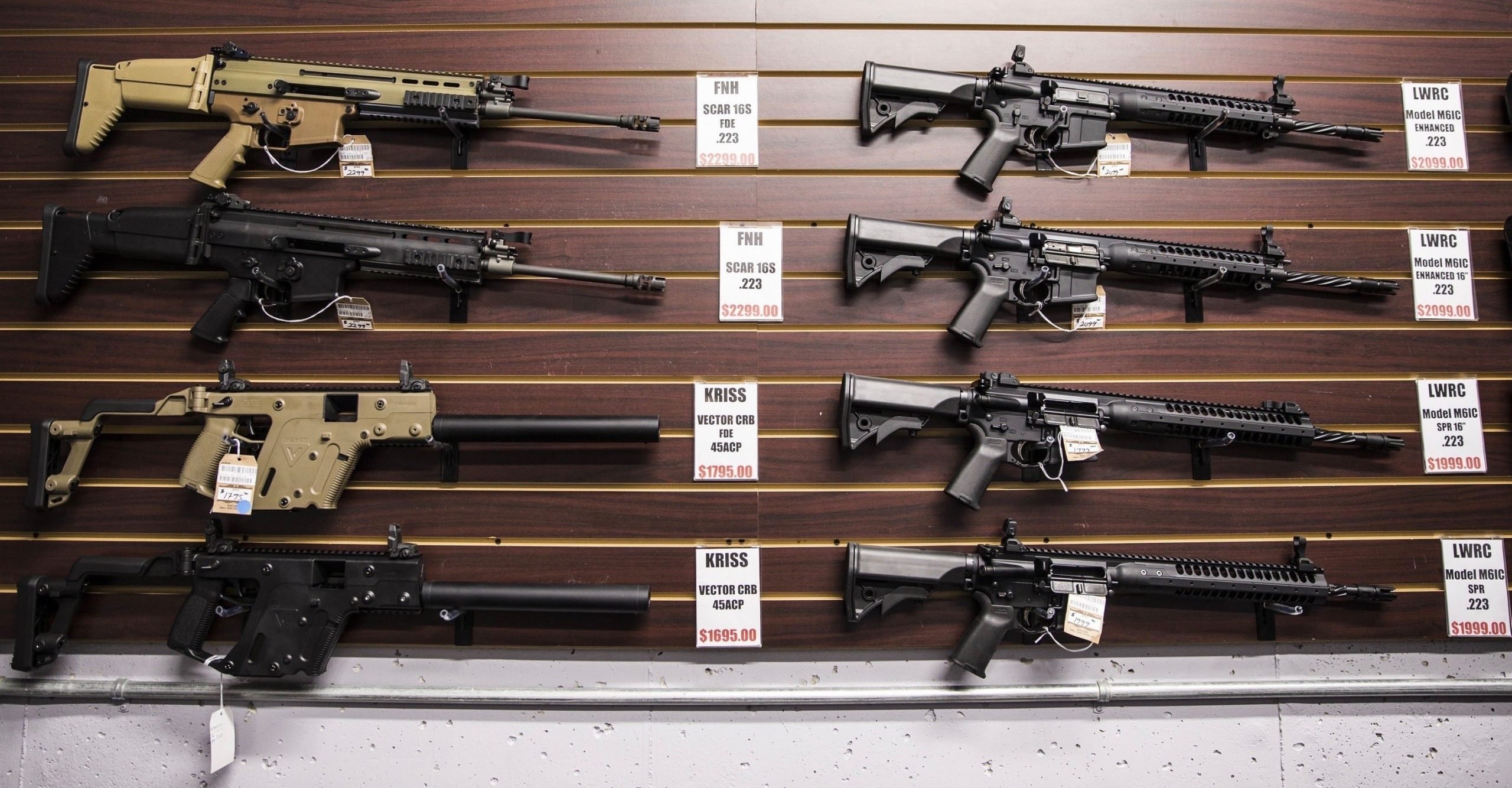Assault weapons loom large in the American gun debate. To their foes, they are the tool of mass murderers, made infamous at Sandy Hook, San Bernardino, Las Vegas, and Parkland. To their fans, guns like the AR-15 are versatile, customizable, and uniquely fun to shoot.
So it’s reasonable to wonder: How many assault-style rifles do Americans actually own?
The answer is much more than trivia. Courts assess the popularity of the weapons when deciding whether politicians can ban them.
That makes it all the more frustrating that there is no way to know precisely how many of these rifles exist in the United States. The numbers are hazy for two main reasons: There’s no official criteria for what qualifies as an “assault rifle,” and the government doesn’t keep detailed data on the different types of firearms owned by Americans.
Some gun experts insist that the term “assault rifle” only refers to a very specific set of weapons: those that are fed ammunition from a detachable magazine, and can switch between semiautomatic and fully automatic fire, a capability known as “select fire.” By that narrow standard, the number of assault rifles in private hands is very small.
The National Firearms Act of 1934 required owners of fully automatic guns to register the weapons with the federal government. Since 1986, Congress has forbidden gunmakers from producing fully automatic weapons for the civilian market, leaving machine gun aficionados to collect older models, and then register them. According to the Bureau of Alcohol, Tobacco, Firearms and Explosives, there are roughly 638,000 machine guns in circulation in the United States, a number that includes both assault rifles like the M16 and more novel products, like the Uzi submachine gun.
But most laws regulating “assault weapons” use a broader definition that some experts say is overly broad. California, Washington, D.C., New York, and five other states have regulations that typically apply to any magazine-fed, semiautomatic rifle that incorporates other design features, which can include a second grip to stabilize the weapon while firing, a rack for mounting accessories, or a muzzle that suppresses the explosive flash of each discharged round. Many of these accessories are mostly for aesthetics, to evoke a combat or “tactical” vibe.
We’re going to use the broader definition of assault weapons here, because it covers the guns that have become familiar to Americans in the last two decades.
One of the most cited estimates of the number of assault-style rifles produced comes from the National Shooting Sports Foundation, the gun industry’s largest trade group. The NSSF does not use the term “assault rifle,” but tracks the production of “modern sporting rifles,” which typically refers to semiautomatic rifles like the AR-15. According to a 2015 report by the trade group, roughly one in 10 guns produced each year is a modern sporting rifle. In raw numbers, American gunmakers produced and imported 8.5 million such rifles between 1990 and 2012, and about one and two million annually every year since.
Do the math and it works out to between 15 and 20 million modern sporting rifles now in circulation. (An important note: The NSSF report includes weapons produced for law enforcement.)
Scholars who have researched American gun ownership treat the industry’s estimates with some skepticism. “The NSSF gave no methodology,” noted Aaron Karp, a lecturer at Old Dominion University who studies the international small arms trade. “None of these numbers are great.”
And it’s important to put the NSSF estimate in context. Americans have purchased almost as many assault rifles as they have Nintendo Switch video game consoles, or copies of the book How To Win Friends And Influence People — successful products that are nonetheless nowhere near household items.
Nonetheless, according to CNN, the AR-15 is now perhaps the most popular single model of rifle in the country. And the overall number of assault-style weapons in the United States is not just an academic matter: the constitutionality of gun bans rests on their historic popularity.
Investigating America’s gun violence crisis
Reader donations help power our non-profit reporting.
In 2008, the Supreme Court ruled in District of Columbia v. Heller that the Second Amendment protects an individual’s right to own guns. Justice Antonin Scalia used his majority opinion to lay out a threshold for the regulation of firearms, arguing that the government cannot prohibit guns “in common use.” Longstanding firearm restrictions like the National Firearms Act are therefore okay, because they do not affect weapons owned by a large number of people.
Last year, an appellate court used the logic Scalia deployed in Heller to rule that modern assault rifles like the AR-15 and AK-47 are also not protected by the Second Amendment, because the weapons are not “in common use.” The decision upheld Maryland’s assault weapons law. Attorneys for the state noted that such guns comprise only 3 percent of the total civilian arsenal of approximately 310 million firearms, citing a 2012 Congressional Research Service report.
Unsurprisingly, conservative judges have disagreed. Years before his nomination to the Supreme Court, Brett Kavanaugh argued in a 2010 dissent to a case brought before the D.C. Court of Appeals that longstanding bans on machine guns only apply to fully automatic weapons never widely used by civilians.
Assessing these bans based on their brief history, however, obscures a key fact: When legislatures first restricted the guns, few civilians owned them. Americans only started buying assault weapons in large numbers after the federal assault weapon ban expired in 2004. That year, there were only about 100,000 made by American manufacturers. Production skyrocketed after Barack Obama won the 2008 election, when domestic gunmakers manufactured almost 500,000 such weapons, and then again following the Sandy Hook Elementary School shooting. In 2013, the gun industry pumped out nearly two million assault-style rifles.
Bans on assault weapons may not be “longstanding” in the eyes of conservatives like Kavanaugh. But civilian ownership of assault weapons is also a recent phenomenon.
Vote on the next question we should answer at Ask The Trace.

